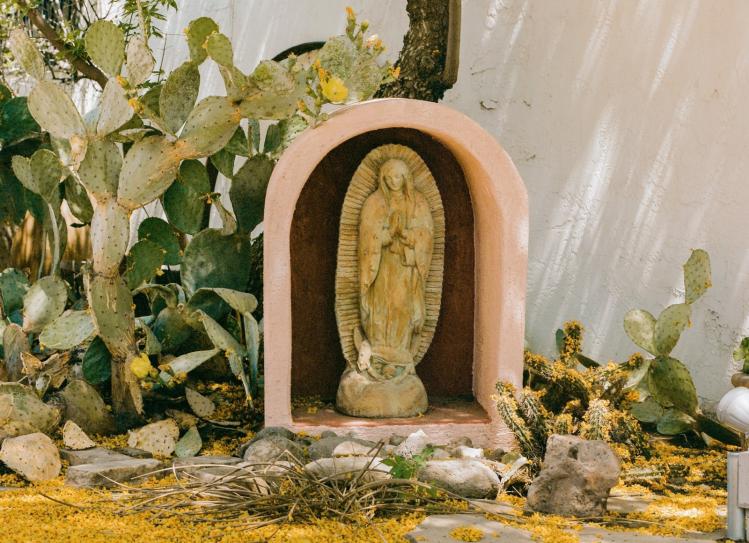
A few years ago, I went on retreat at St. Andrew’s Abbey, a Benedictine monastery of the Congregation of the Annunciation, in Valyermo, California, just north of Los Angeles County in the Mojave Desert. The monks follow a modern adaptation of the Divine Office and practice silence from after Compline to after Lauds the next morning. Retreatants had access to a multipurpose room where quiet conversation could take place, but we were warned that noise carries farther in the desert, so it was advised that we avoid speaking if possible.
After the great silence began, I went to my room to journal. As I reflected on the day’s spiritual movements, I heard a scratching noise. I stood on my bed to peer over a ledge and discovered a tiny desert mouse, frozen in fear and looking back at me. I sat back down, and the mouse continued to scratch randomly throughout the night. The sound seemed to get louder with every minute that passed. I couldn’t fall asleep, concerned about the mouse crawling down from the ledge and, in the worst-case scenario, into my bed. I decided I’d stay up instead. I prayed with Scripture for awhile and ended the night with a rosary that finally lulled me to sleep.
On the second night I was surprised to find that my rodent roommate was still there, but now looking down at me from the ledge, watching my every move as I watched his. I had expected to find silence and restful sleep in the desert night, but the Spirit had different plans for me. The Benedictine monk was right: I learned that the desert silence makes sound more discernible, and that though I may have been in solitude, I was never alone.
During the month of December we’re inundated with images of wintery wonderlands, but the advent liturgy takes us into the desert. John the Baptist emerges twice a year, reminding us to repent, announcing the Good News and preparing us for the passion, death, and resurrection in Lent and for the birth of Jesus in Advent. He serves as our guide because he’s gone before us. We can imagine that he has spent many restless nights sitting in the silence and solitude of the desert with God, discerning God’s voice clearly and filled with the certitude that salvation is here. With John as our guide, we can experience joy amid external turmoil, knowing that even though things may be difficult we are not alone and, like the crowd gathered around John the Baptist in today’s Gospel, we can be “filled with expectation” for the future (Luke 3:15).
This year the feast of our Lady of Guadalupe falls on this Advent Sunday. We also celebrated the Blessed Mother’s Immaculate Conception this past Wednesday. With Mary on our minds this Advent week, I begin to contemplate the silence of her womb and the solitude of her pregnancy. While our Advent season lasts about four weeks, Mary’s lasted approximately forty—the length of her pregnancy—beginning with the Annunciation. Her forty weeks reminds me of our forty days in the Lenten desert. Unlike John the Baptist, whose restless nights were caused by the external discomforts of the desert, we can imagine that many of Mary’s discomforts in her forty weeks were due to the internal symptoms of her pregnancy. With Mary as our guide, we can experience joy amid internal turmoil knowing that even though we may be anxious, worried, angry, or depressed, we are not alone in our suffering. Mary experiences this silence and solitude with God; she is intimately connected to the savior and is “filled with expectation” for the future (Luke 3:15).
Today we can rejoice not because the things that trouble us have come to an end, but because we see the nativity of Jesus on the horizon, and this birth has meaning because we know how the life of Christ plays out. To anticipate his birth is to anticipate the crucifixion. The rose color of the advent candle of Gaudete Sunday does not suggest a naive outlook on the world. Instead, it is the penitent and painful purple mingling with the joy of salvation. It’s the light of God coming through in the silence and the solitude.
This is the third in a series of 2021 Advent reflections. A new reflection will be posted every Sunday in Advent. You can read the first one here, the second one here, and the final one here.
Please email comments to [email protected] and join the conversation on our Facebook page.
Previous Story
At the Crossroads
Next Story
Should Philosophy Retire?